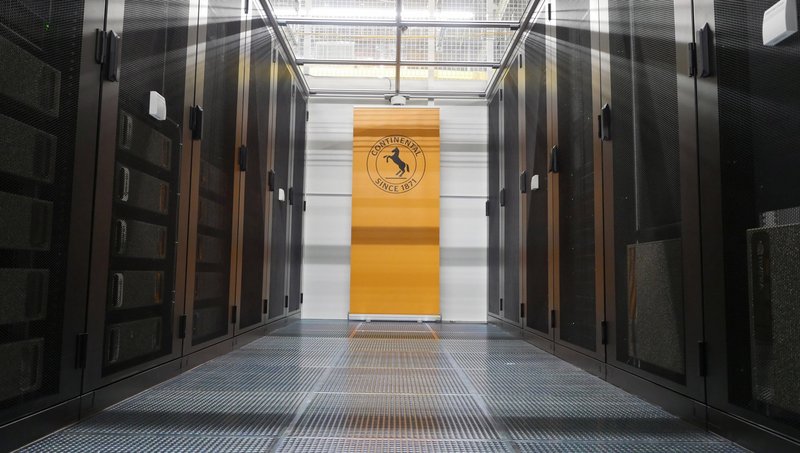Supercomputer as a time machine
Speed and innovation are the difference between success and failure on the automotive software market. Self-driving cars in particular are among the automotive industry’s biggest promises for the future. However, software and technology are posing unimagined challenges for developers. Continental is stepping up the pace and increased its technical capacity in 2020 with the addition of a supercomputer. The goal is to make the artificial intelligence of modern assistance systems fit for autonomous driving. To achieve this, millions of scenarios must be calculated over and over again until the machine has learned how the world around the vehicle works – and how the vehicle should behave in that world.
Continental’s supercomputer is helping in this process. The supercomputer is based on DGX systems from the chip manufacturer Nvidia, which are designed for the development of AI systems. More than 50 of these systems, each of which costs a six-digit figure, were combined to form a supercomputer that is among the 500 most powerful computers in the world. Located in a data center in Frankfurt am Main, the supercomputer, which runs on certified green electricity, comprises more than 400 graphics processors and conducts several billion computing operations per second.
“The supercomputer is an investment in our future,” says Christian Schumacher, head of Program Management Systems at Continental. He is certain that “we are thus at the cutting edge of development and are contributing to moving autonomous driving into medium-term business plans.”
The computing power of the supercomputer is unique in the automotive industry. It helps “especially in innovative software disciplines such as deep learning and AI-driven simulations,” says Schumacher. With deep learning, the supercomputer uses artificial neural networks to imitate the learning processes of the human brain. In the development of self-driving vehicles, this happens by loading millions of images into the software. The software gathers experiences in this way so that one day it will be able to safely move through traffic. The supercomputer accelerates this process, which involves enormous amounts of data and thousands of hours of video material as well as millions of images, from several weeks to just a few hours.
“This newly gained computing power enables us to develop the state-of-the-art systems we need for assisted, automated and autonomous vehicles in a much quicker, more effective and more cost-efficient way,” says Schumacher. This is how it works: Continental is currently driving approximately 15,000 km per day with its fleet. That generates around 100 terabytes of data and corresponds to around 50,000 hours of video material. The supercomputer evaluates these. The result: Based on this quantity of test drive data, the supercomputer creates virtual worlds in which the system can get its bearings. Real test drives can now be simulated. This virtual simulation enables up to 8,000 km of test drives per hour. “That means that we need fewer journeys on the road, allowing us to considerably speed up our programming, including the training of the artificial neural networks,” says Schumacher.
The supercomputer acts as a double time machine that not only paves the way into the future but also accelerates this journey. In order for the supercomputer to keep up-to-date in the rapidly developing software world, capacity and storage space can be expanded through cloud solutions. That is important, as developing assistance systems and technology for autonomous driving involves very large amounts of data – “and our expectation is that these quantities will increase further,” says Schumacher.
Requirements in terms of computing power will also increase when even more cars with a whole host of sensors from cameras through to laser radar come onto the roads. These improved raw data must ultimately be processed by intelligent AI systems to create a comprehensive model of the vehicle environment. “Vehicles therefore become assistants and concierges,” says Michels. They should, for example, ensure that a vehicle masters a lane change or a rotary smoothly like a human and can safely navigate when there is snow, ice, a slippery road or limited visibility. This is a lot of work, which the supercomputer can do.
Back to software overview.



